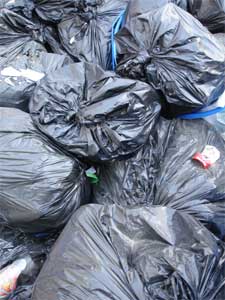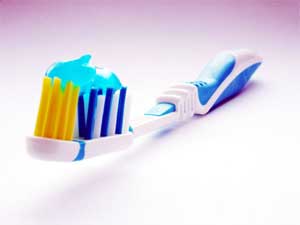 “Think that it is possible to live without plastic (or anything single-use for that matter) in the world and suddenly you will have time to explore the alternatives. It’s like being a pioneer, except instead of surviving under scarce circumstances, you are bombarded with exploitative bounty. You must choose to be more particular about the circumstances you accept for your health, your environment and your community and share this knowledge with others!”
“Think that it is possible to live without plastic (or anything single-use for that matter) in the world and suddenly you will have time to explore the alternatives. It’s like being a pioneer, except instead of surviving under scarce circumstances, you are bombarded with exploitative bounty. You must choose to be more particular about the circumstances you accept for your health, your environment and your community and share this knowledge with others!”
~ Cheryl Lohrmann, Leave No Plastic Behind
It seems lately that reminders about the impact of plastic have been almost as prevalent as the plastic itself. I did a post about reducing plastic use awhile ago, but fates have conspired to warrant another. Last night John and I went to the opening of the art exhibit Haste Management, sponsored by the group Leave No Plastic Behind. Our friend, Dani, had participated in the project and had entered a piece.
The group has the goal of decreasing demand for single-use plastic through “creative awareness campaigns,” including their twice-yearly art shows. As part of the art shows, participants agree to live “plastic-free” for a three-month period. As LNPB says on their website, “A plastic-free lifestyle challenges you to refrain from purchasing items that are packaged in any sort of single-use plastic, including: to-go coffee lids, plastic cups or cutlery, water, prepackaged foods, soap, shampoo, toilet paper, dish soap, laundry soap, utensils…”
Artists have to keep any plastic they use throughout those three months and then use at least some of it in their art piece. There were some pretty unique pieces at the exhibition last night. One artist created a pen and ink life-sized drawing of a Brown Pelican on a large plastic garment bag from a retail store. Another had constructed a quilt sort of piece, all out of plastic on both sides. One artist crocheted a purse and a hat from plastic bags. And Dani made a cool piece using materials like linen, wood, paint, items from nature, and plastic, of course.
In addition to providing entertainment for the eye and encouraging art fans to sign a pledge to reduce their plastic use, the artists created a list of suggested actions that people could take to help reform their plastic habit. Here are some of their suggestions:
- When buying veggies at the market, there’s no need to put them in the plastic bag since you’ll be washing them anyway.
- Ask yourself: “Is this product I am about to purchase a Want or a Need?”
- Buy in bulk using your own reusable bags.
- Make your own bread (or buy it from your local bakery and bring your own bread bag).
- Rather than buy lunch every day at work I bring in lunches I have prepared, in advance, and store these in individual reusable glass containers.
- I carry my canvas shopping bags in my car at all times. I purchased these bags over 25 years ago when I lived in CT. I use them for groceries, library books, and other items.
- Although we rarely eat out, I do carry containers in the car that I bring into the restaurant. It also helps count calories as I divide the serving in half directly into the container before I eat.
- I never buy “garbage bags” as I use the cat or dog food bags for “trash” – thing is it takes forever to fill as I am not a normal consumer.
- Write a letter to the company producing plastic or to a local legislator or national representative regarding use of plastic. Letter writing is one of the most effective forms of expressing our concerns, visions and desires. It is estimated that for every 100 letters written to a legislator, the views of 10,000 people are represented. This is partially because so few people take the time to express their views.
- It may be simple, but the best resource I’ve found for supplementing my plastic-free grocery needs is my co-op.
- I always have a fork and spoon on me. I find that when I bring my own reusable plate to the cafe, people think my food looks better than what they got even though it’s the same food!
I’ve also run across several other interesting blog posts and mentions of plastic use recently, including:
Challenge yourself in the plastic realm. Do a little inventory of your home and/or your office, and see how much plastic you have in your life. The next time you go shopping, say, for groceries, just notice how much plastic you bring home with you. Take a day (or a week) and keep all the plastic you use. Notice how much you have at the end of your test period. Look through it and see what you really could have done without, what you could have used instead, and how you could have reused (or recycled) the plastic you had left. Then, start paying attention. Do you really need that plastic straw? Can you keep canvas bags in your car? Can you use non-plastic reusable bottles? Focus on when you can easily let go of plastic, and then continue to take steps on the plastic-free continuum.
~ Marsha
Image courtesy of garrisonphoto.
Filed under: Consumerism, environmental preservation, MOGO Habits | Tagged: animal protection, Consumerism, environmental preservation, Leave No Plastic Behind, MOGO Habits, news, oregon, plastics, portland, positive choices | Leave a comment »
 Do you find yourself haunted by the amount of plastic in your life? Has it become a nemesis? Perhaps it’s the addiction you can’t shake, promising yourself that this is the last piece of Tupperware, that next time you’ll remember to bring your reusable bags to the store, that you’re really going to switch to refillable pens….
Do you find yourself haunted by the amount of plastic in your life? Has it become a nemesis? Perhaps it’s the addiction you can’t shake, promising yourself that this is the last piece of Tupperware, that next time you’ll remember to bring your reusable bags to the store, that you’re really going to switch to refillable pens….

 Just how much waste do we generate
Just how much waste do we generate In the hurry-scurry of our daily lives, it’s easy to buzz through on auto-pilot and not bring attention to the amount of stuff we’re consuming each morning — the soap and shampoo in the shower; the toothpaste; the coffee or juice in our cup — and throughout the day. Certainly, the amount of toothpaste we use in a day, or amount of drink we toss down the drain might be small, but all those little excesses add up — for the planet as well as our pocketbooks.
In the hurry-scurry of our daily lives, it’s easy to buzz through on auto-pilot and not bring attention to the amount of stuff we’re consuming each morning — the soap and shampoo in the shower; the toothpaste; the coffee or juice in our cup — and throughout the day. Certainly, the amount of toothpaste we use in a day, or amount of drink we toss down the drain might be small, but all those little excesses add up — for the planet as well as our pocketbooks. Your daughter/niece/friend’s child wants a doll, and although you have fond memories of the exploits of Ken and Barbie from your own childhood, you realize that Barbie really isn’t the best role model. And, of course, those brazen, anorexic
Your daughter/niece/friend’s child wants a doll, and although you have fond memories of the exploits of Ken and Barbie from your own childhood, you realize that Barbie really isn’t the best role model. And, of course, those brazen, anorexic  News headlines read “Merry Wal-mart, America” and “It’s Beginning to Look at Lot Like a Wal-mart Christmas.” A
News headlines read “Merry Wal-mart, America” and “It’s Beginning to Look at Lot Like a Wal-mart Christmas.” A  On the day after Thanksgiving, most people will be joining the hordes that make up “Black Friday” — the biggest shopping day of the year. But, of course, we know that the path to a humane world isn’t paved by consumerism. So, if you’re looking for a way to encourage others to consume less, consider participating in
On the day after Thanksgiving, most people will be joining the hordes that make up “Black Friday” — the biggest shopping day of the year. But, of course, we know that the path to a humane world isn’t paved by consumerism. So, if you’re looking for a way to encourage others to consume less, consider participating in 


 When Apple’s iPhone debuted, people lined up for days to be one of the first to snatch one. Computers become obsolete almost as soon as they make it to your desk. And, if you believe marketers, no person is truly complete (or competent), unless s/he has all the latest electronic gadgets. Use of electronics –- computers, TVs, mp3 players, cell phones, personal devices, etc. –- has become an integral part of many people’s lives. But all those gadgets create a lot of waste –- not to mention all the toxic and uneco-friendly components involved in their creation and disposal, and the severe consequences to the adults and children in developing countries who end up deconstructing these toxin-laden components. Since our penchant for all things “e” isn’t likely to diminish anytime soon, it’s important to be informed about the effects of the electronics we’re buying and what we can do to reduce their negative impact. Here are a few sources to get you started:
When Apple’s iPhone debuted, people lined up for days to be one of the first to snatch one. Computers become obsolete almost as soon as they make it to your desk. And, if you believe marketers, no person is truly complete (or competent), unless s/he has all the latest electronic gadgets. Use of electronics –- computers, TVs, mp3 players, cell phones, personal devices, etc. –- has become an integral part of many people’s lives. But all those gadgets create a lot of waste –- not to mention all the toxic and uneco-friendly components involved in their creation and disposal, and the severe consequences to the adults and children in developing countries who end up deconstructing these toxin-laden components. Since our penchant for all things “e” isn’t likely to diminish anytime soon, it’s important to be informed about the effects of the electronics we’re buying and what we can do to reduce their negative impact. Here are a few sources to get you started: